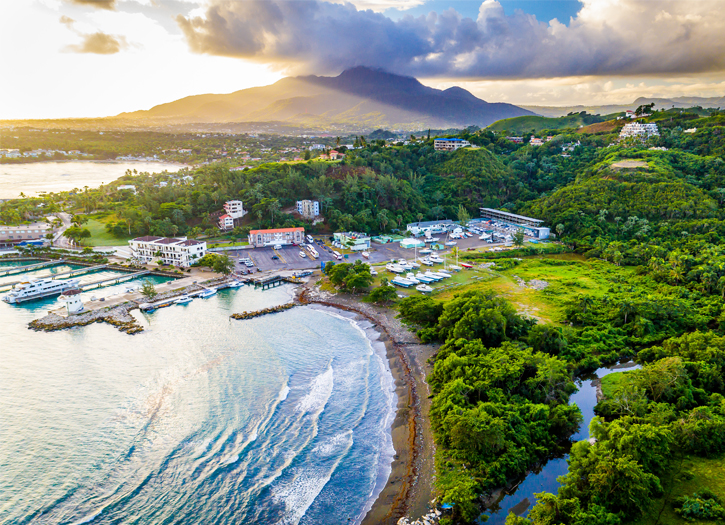The COVID-19 pandemic in the Dominican Republic is part of the worldwide pandemic of coronavirus disease 2019(COVID-19) caused by severe acute respiratory syndrome coronavirus 2 (SARS-CoV-2). The virus was confirmed to have reached the Dominican Republic on 1 March 2020. The disease in China affected over 80,000 people, causing over 3,200 deaths (as of March 25, 2020) and has now spread to over 210 countries and territories across the world.
On 8 March, three more cases were confirmed from Dominican tourists that came from a trip to Italy. On 14 March, the Minister of Public Health, Rafael Sánchez Cárdenas, confirmed six new cases. All of the individuals had been outside of the country within the past 14 days. The first documented case of local transmission seems to have originated from a 56-year old Dominican woman from the town of Villa Riva on Duarte Province who had traveled from Italy to the Dominican Republic on 26 February 2020. Two weeks later, Duarte Province confirmed number of cases are only surpassed by the two larger urban centers (Distrito Nacional/Santo Domingo and Santiago) in the number of cases (29) and leads in the number of casualties (4).
On 14 March, a high-profile wedding in Cap Cana seemed to be the COVID-19 infection source for a number of its attendees, which included many foreign residents. The wedding received a lot of public criticism for having had a “crazy hour” theme mocking the coronavirus concerns. The chancellor of the Dominican Republic, Miguel Vargas Maldonado would have contracted the virus from his son, who attended the said wedding and also contracted COVID-19.
On 17 March, President Danilo Medina gave an address to the nation and declared a state of emergency, announcing a series of measures to try and stop the spread of the virus. He ordered all land, sea, and air borders be closed for the next 15 days, taking effect as of 19 March. Additionally, all commercial business activity will be suspended, with the exception of supermarkets, convenience stores, gas stations, and pharmacies. Schools will remain closed through 13 April, and public employees who are 60 years of age or over, or those with a pre-existing health condition, must stay confined to their residences.
On 20 March 2020, the government decreed a mandatory night curfew from 8pm to 6am until 3 April. Only doctors and health workers, journalists, and guardsmen were exempt.
March 31, 2020, President Danilo Medina appointed (Decree 140-20) Doctor Amado Alejandro Baez as his senior advisor for Public Health and Chief Executive Officer for the Presidential COVID-19 Committee.The Presidential COVID-19 Committee was tasked with creating public-private partnerships as well as developing public policy, strategies and operations to combat COVID-19 at a national level. On April 22, 2020, The first Dominican Epidemiology Intelligence Center was developed by the Presidential COVID-19 Committee under the leadership of Minister of Defense Lt General Paulino Sem, Counter Admiral Lee Balester and Doctor Amado Alejandro Baez. The Epi Intel Center was housed out of the Ministry of Defense C5i Center and tasked with creating inter-agency “Inteligence Fusion” efforts that guided country-wide strategies and COVID-19 operations .
After the epidemiological impact of COVID-19 post the July 5th 2020 presidential elections, the DR experienced a peak in positivity on July 23rd, after which a continuous deceleration was noticed up to late September, this prompted a formal public congratulations by the World health Organization to the Dominican Government on Sept 24th 2020, the drastic improvements were noted on positivity rates, case fatality ratios and hospital capacity utilization, clearly this being evidence of all collective efforts of prior and current (August 16th) authorities. Similarly on Sept 25th 2020, Dominican media reported the country as having one of the lowest mortality rates in the region (CFR ~1.9%).
A number of provinces have decided to limit access to their territories to avoid contagion from COVID-19, such as San José de Ocoa and El Seibo, which remained case-free (as of 26 March) .Other provinces in case-free areas are asking their authorities for similar measures.On 3 April 2020, the World Bank released US$150 million to support the Dominican Republic’s efforts to contain COVID-19.







Add Comment